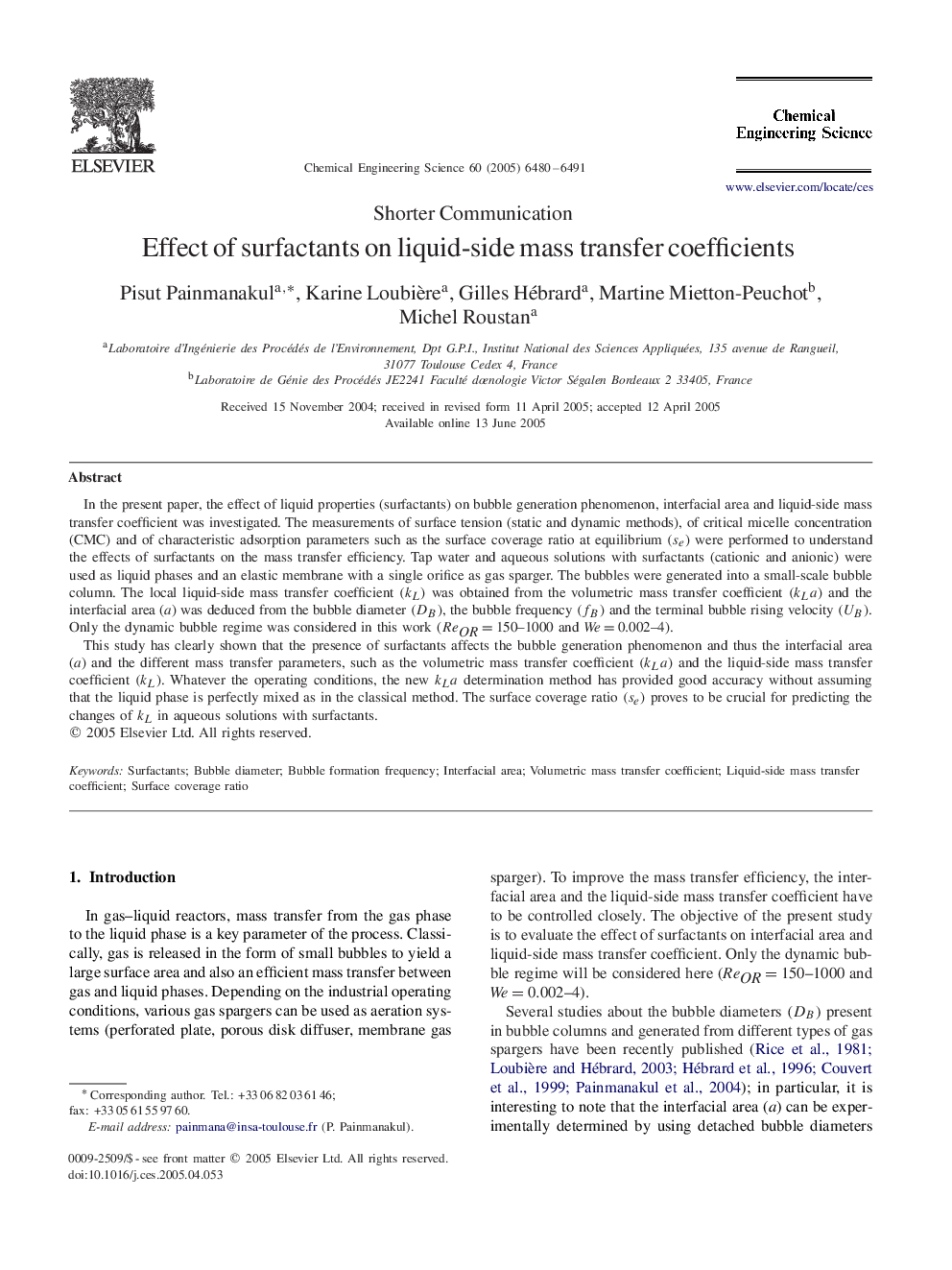| Article ID | Journal | Published Year | Pages | File Type |
|---|---|---|---|---|
| 159283 | Chemical Engineering Science | 2005 | 12 Pages |
In the present paper, the effect of liquid properties (surfactants) on bubble generation phenomenon, interfacial area and liquid-side mass transfer coefficient was investigated. The measurements of surface tension (static and dynamic methods), of critical micelle concentration (CMC) and of characteristic adsorption parameters such as the surface coverage ratio at equilibrium (se)(se) were performed to understand the effects of surfactants on the mass transfer efficiency. Tap water and aqueous solutions with surfactants (cationic and anionic) were used as liquid phases and an elastic membrane with a single orifice as gas sparger. The bubbles were generated into a small-scale bubble column. The local liquid-side mass transfer coefficient (kL)(kL) was obtained from the volumetric mass transfer coefficient (kLa)(kLa) and the interfacial area (a ) was deduced from the bubble diameter (DB)(DB), the bubble frequency (fB)(fB) and the terminal bubble rising velocity (UB)(UB). Only the dynamic bubble regime was considered in this work (ReOR=150ReOR=150–1000 and We=0.002We=0.002–4).This study has clearly shown that the presence of surfactants affects the bubble generation phenomenon and thus the interfacial area (a ) and the different mass transfer parameters, such as the volumetric mass transfer coefficient (kLa)(kLa) and the liquid-side mass transfer coefficient (kL)(kL). Whatever the operating conditions, the new kLakLa determination method has provided good accuracy without assuming that the liquid phase is perfectly mixed as in the classical method. The surface coverage ratio (se)(se) proves to be crucial for predicting the changes of kLkL in aqueous solutions with surfactants.
